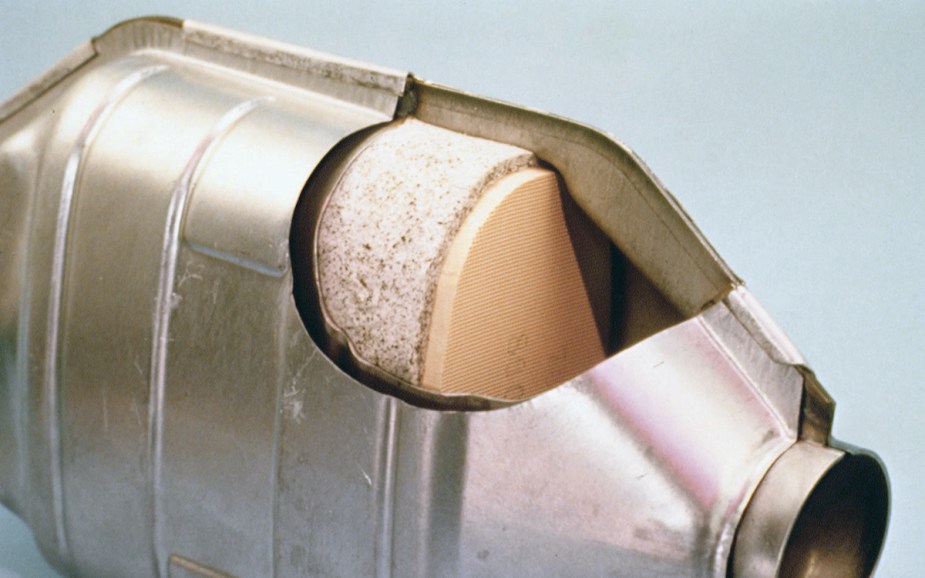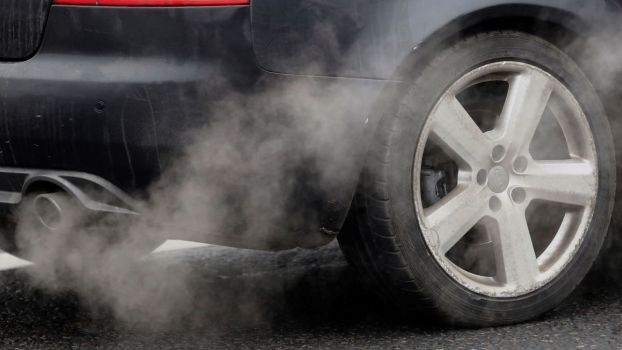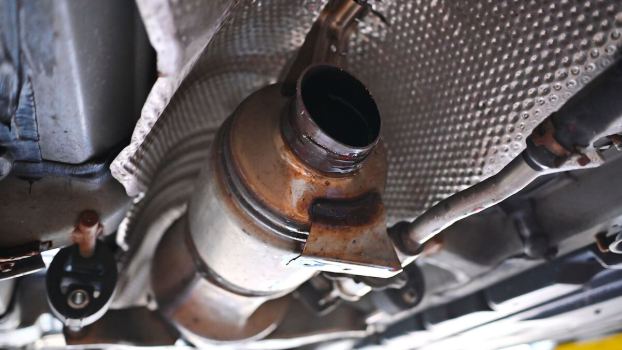
Can I Put Lacquer Thinner in my Car’s Gas Tank?
If your car isn’t passing emissions, it may need a new catalytic converter. However, the catalytic converter is a very expensive part that’s out of the price range for most drivers in a pinch. In that case, one idea is to put lacquer thinner in the car’s gas tank to clean out the converter. But is this really a good idea?

Why would you want to put lacquer thinner in your car’s gas tank?
It has been a common thought among YouTubers and at-home mechanics for years that running lacquer thinner through your car’s gas tank can clean the catalytic converter. This process may sound harmful, considering lacquer thinner is meant to strip paint from surfaces and is highly flammable, but it’s not. Many mechanics – including Scotty Kilmer (a well-known YouTuber – have done this and found some success, while others have not.
Eric the Car Guy – another well-known automotive YouTuber and mechanic – did a little experiment years ago to see if putting lacquer thinner in a car’s gas tank could clean out its catalytic converter.
Spoiler alert: After running his little test, he concluded that using lacquer thinner didn’t help clean out the catalytic converter in his Subaru, and the process even triggered a check engine light.
How do you use lacquer thinner in a car?
If you suspect that your car’s catalytic converter is no longer doing its job sufficiently – either from not passing emissions or emitting a rotten egg smell – you can try this trick at home. Just because it didn’t work for some people, it doesn’t mean that it might not work for you. However, remember that your results may vary.
To try this trick, here are the steps according to Vehicle History:
- If there is something wrong with your car’s catalytic converter, your car will likely give you a check engine light. Upon plugging in an OBD reader, the code it throws will most likely be P0420.
- To clean the converter, pour about a quart of pure lacquer thinner into the car’s gas tank.
- Next, set out for a long drive. Ideally, you’ll want to drive the car at least 150 miles at freeway speeds. It’s a good idea to set up a day trip during the weekend to do this. However, you can also run the engine at around 2,500 rpm for 30 minutes as a more efficient alternative.
- After running the lacquer thinner through the engine, the catalytic converter should be cleaned.
Again, your results for this process can vary. But you’ll know if the process worked via the check engine light going away or the car passing emissions.
Here’s another way to clean the catalytic converter

If you decide that cleaning out the catalytic converter by using lacquer thinner isn’t for you, there’s another way to do it. According to Scotty Kilmer, you can remove the catalytic converter from the car entirely and soak it in a bucket of soapy water. The suds should clean the converter out, and you’ll be able to see the results for yourself when the process is done.
Whichever method you end up choosing, there’s a good chance that you can clean a dirty catalytic converter for relatively cheap. In some worst-case scenarios, you may have to replace the converter completely.





